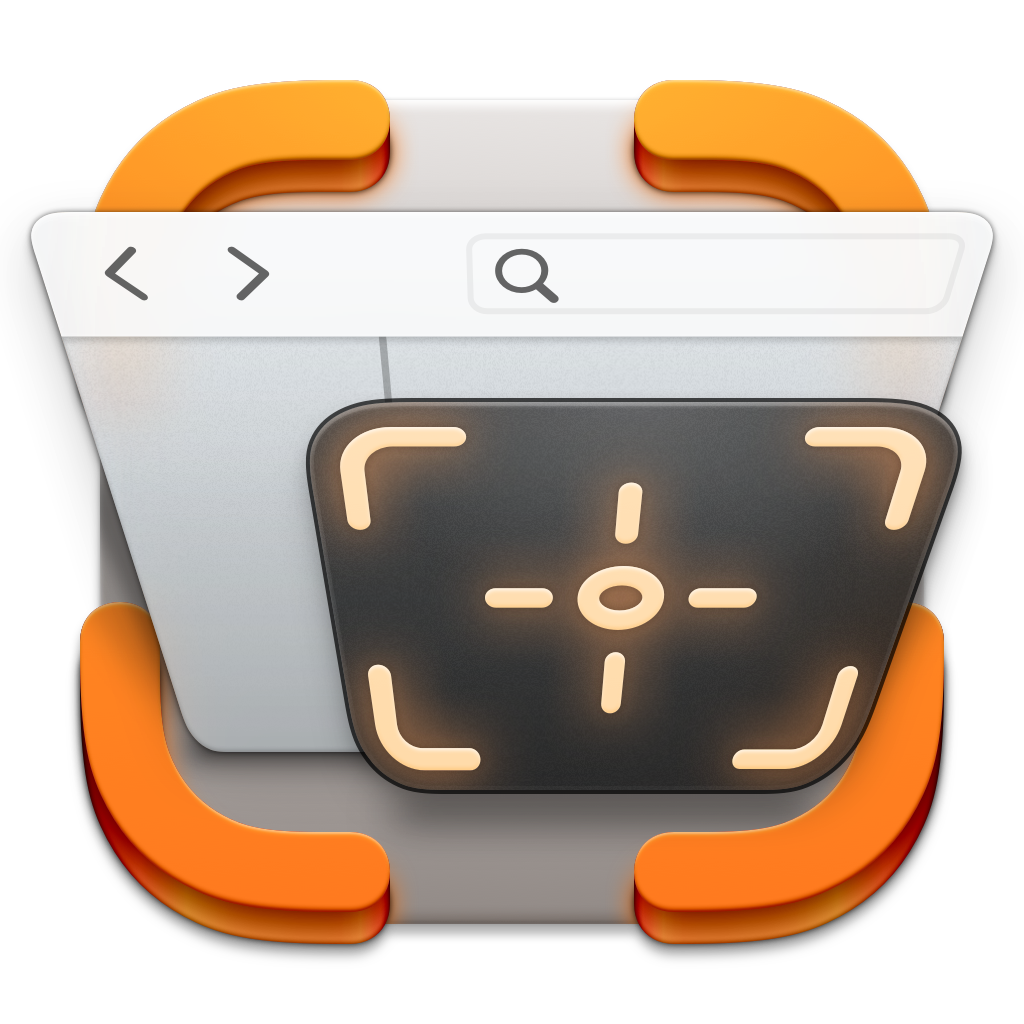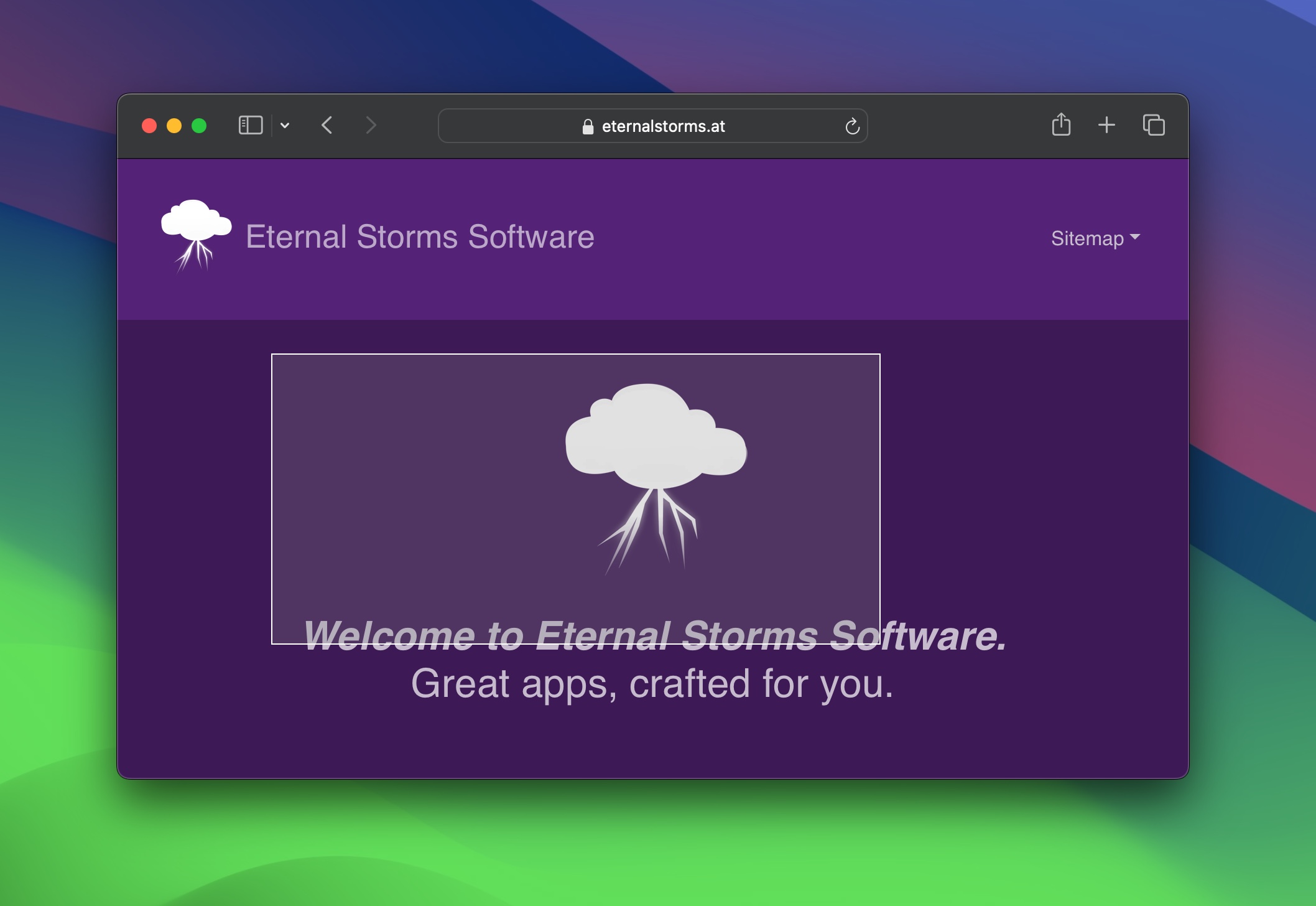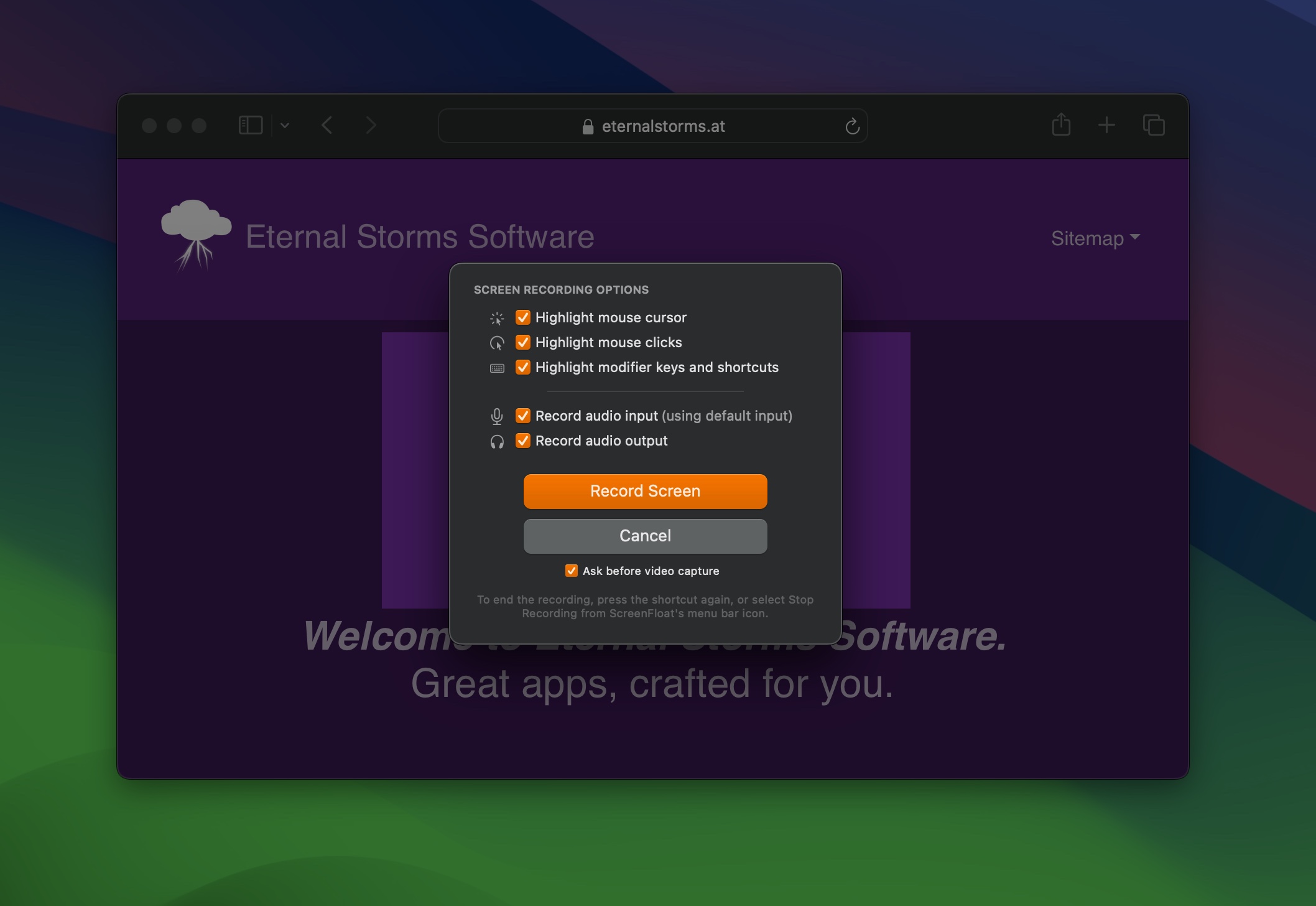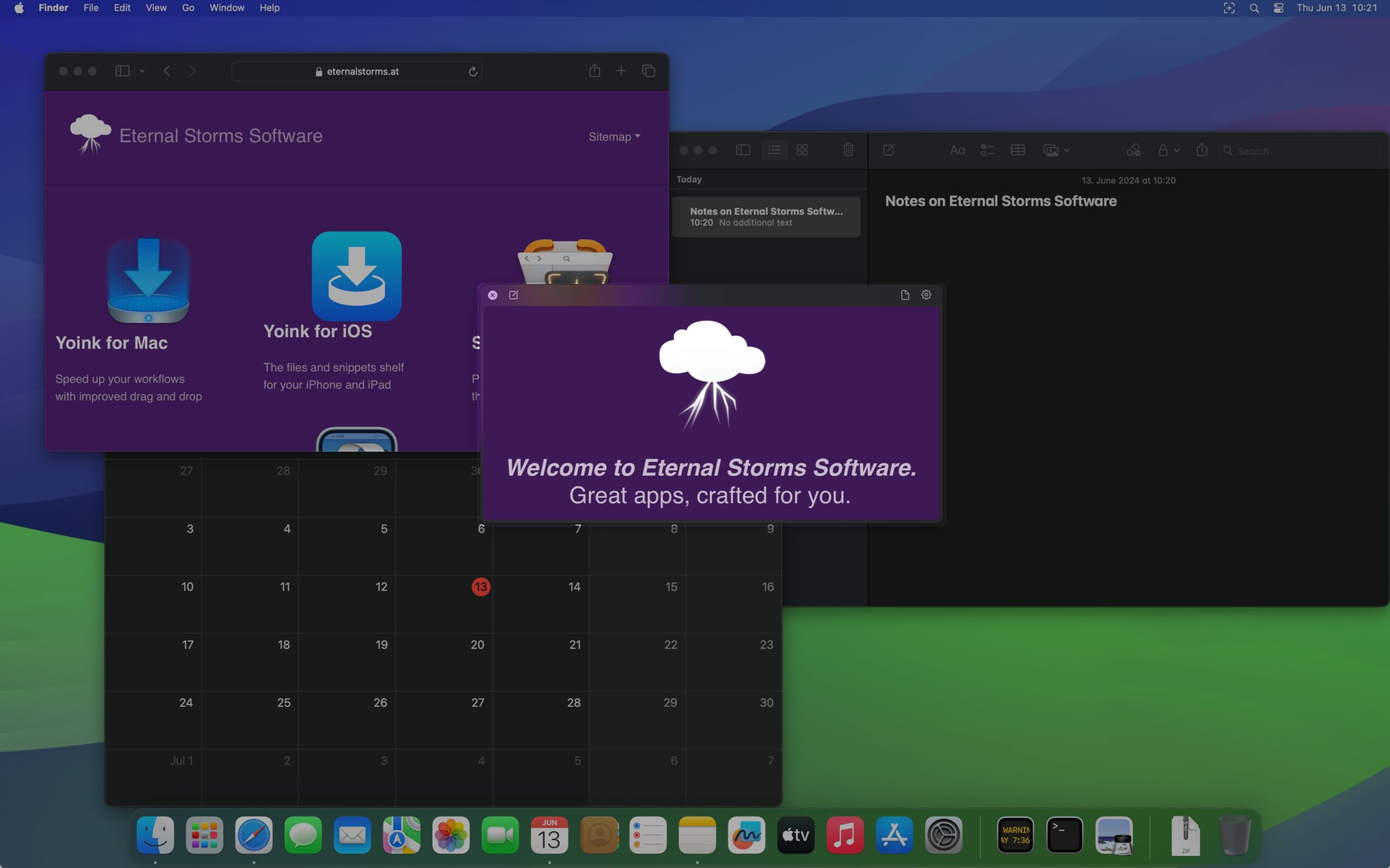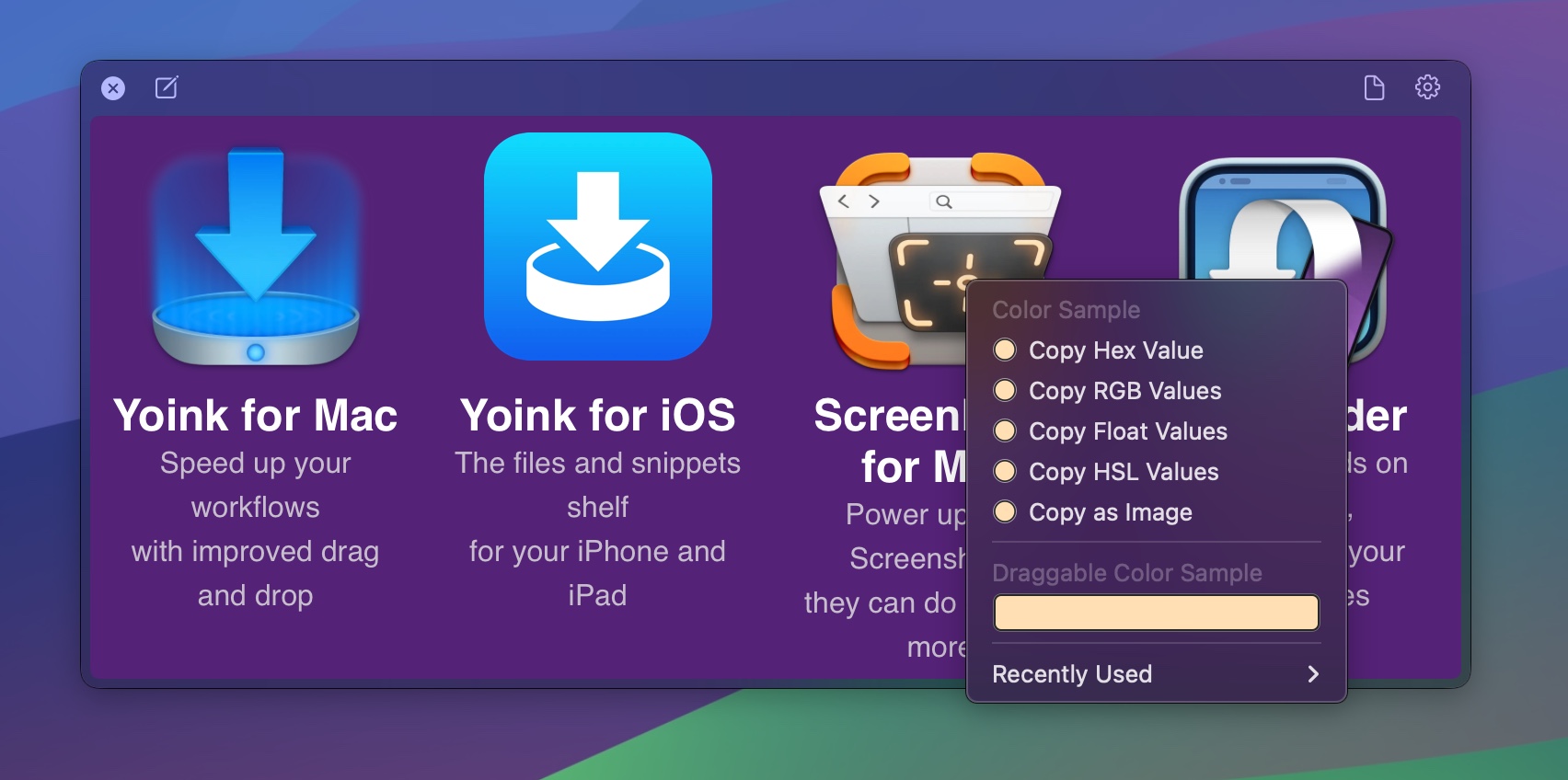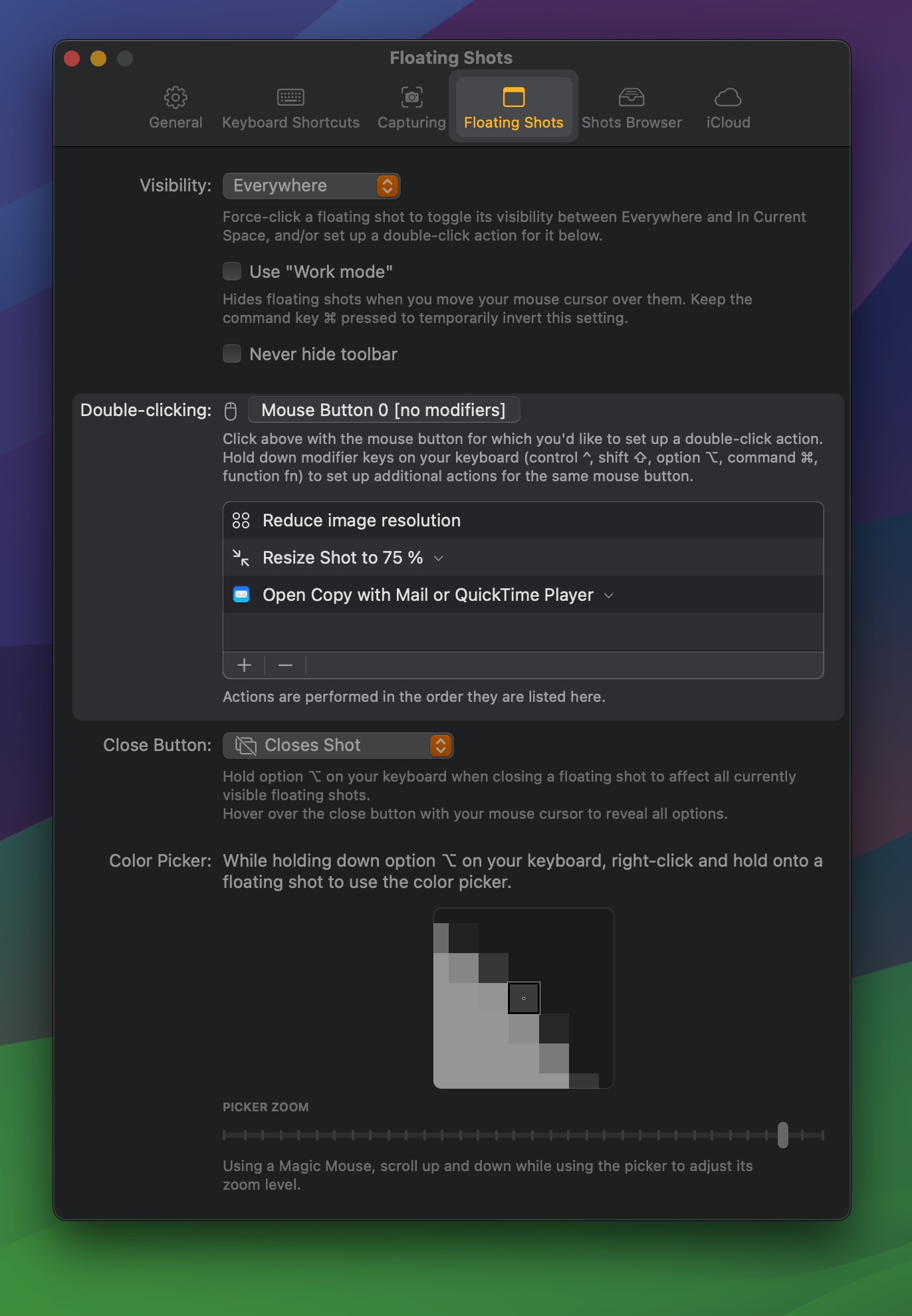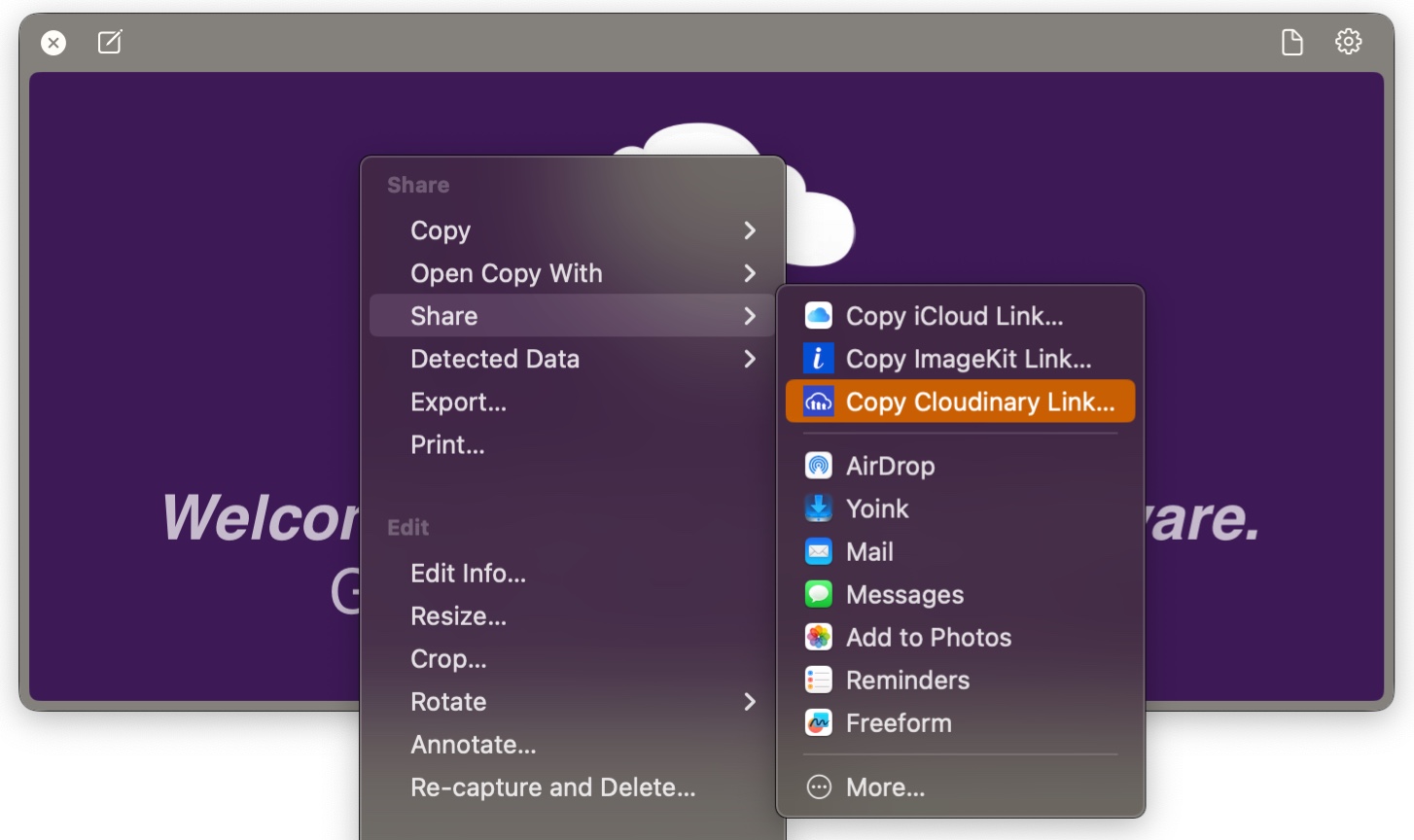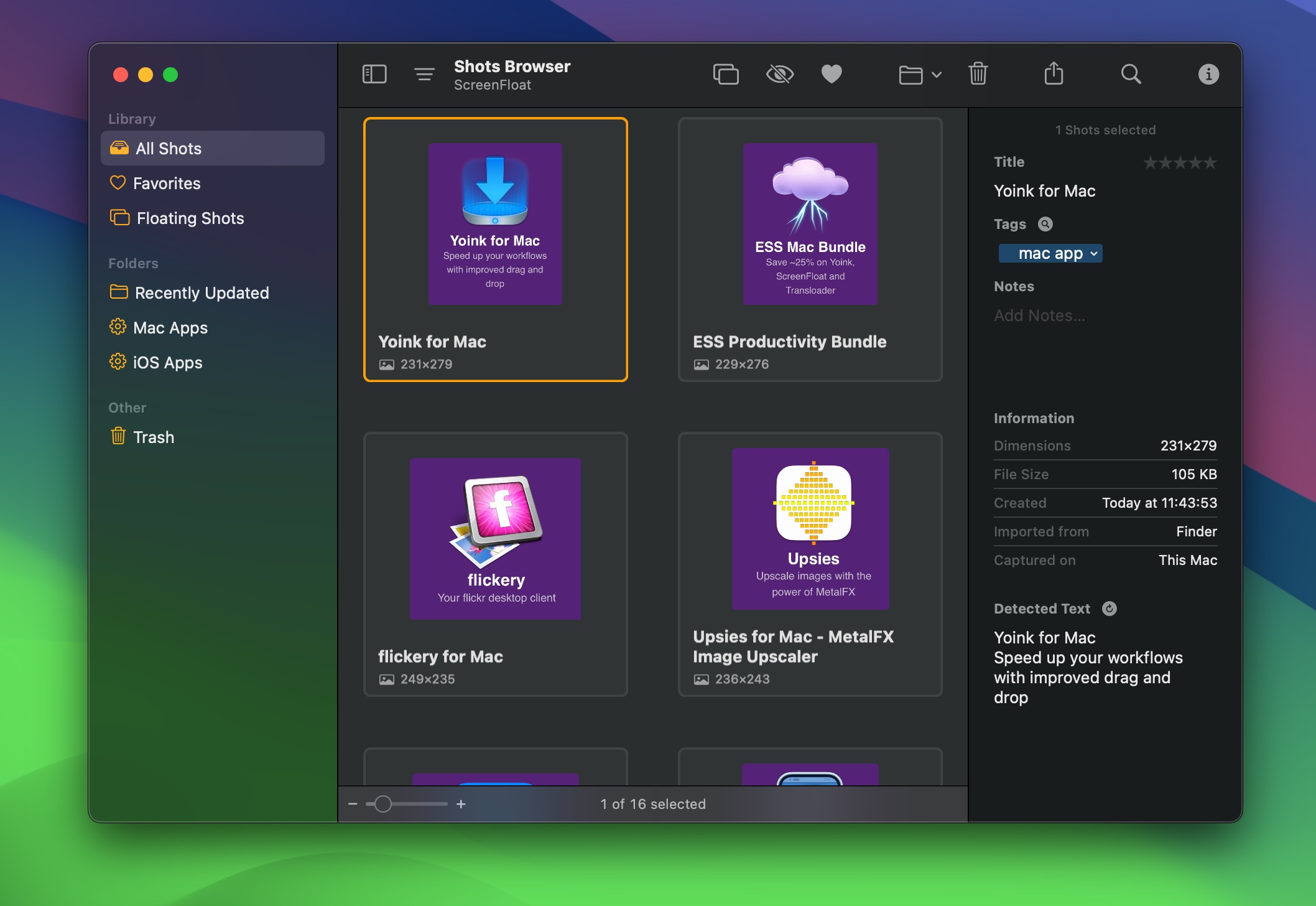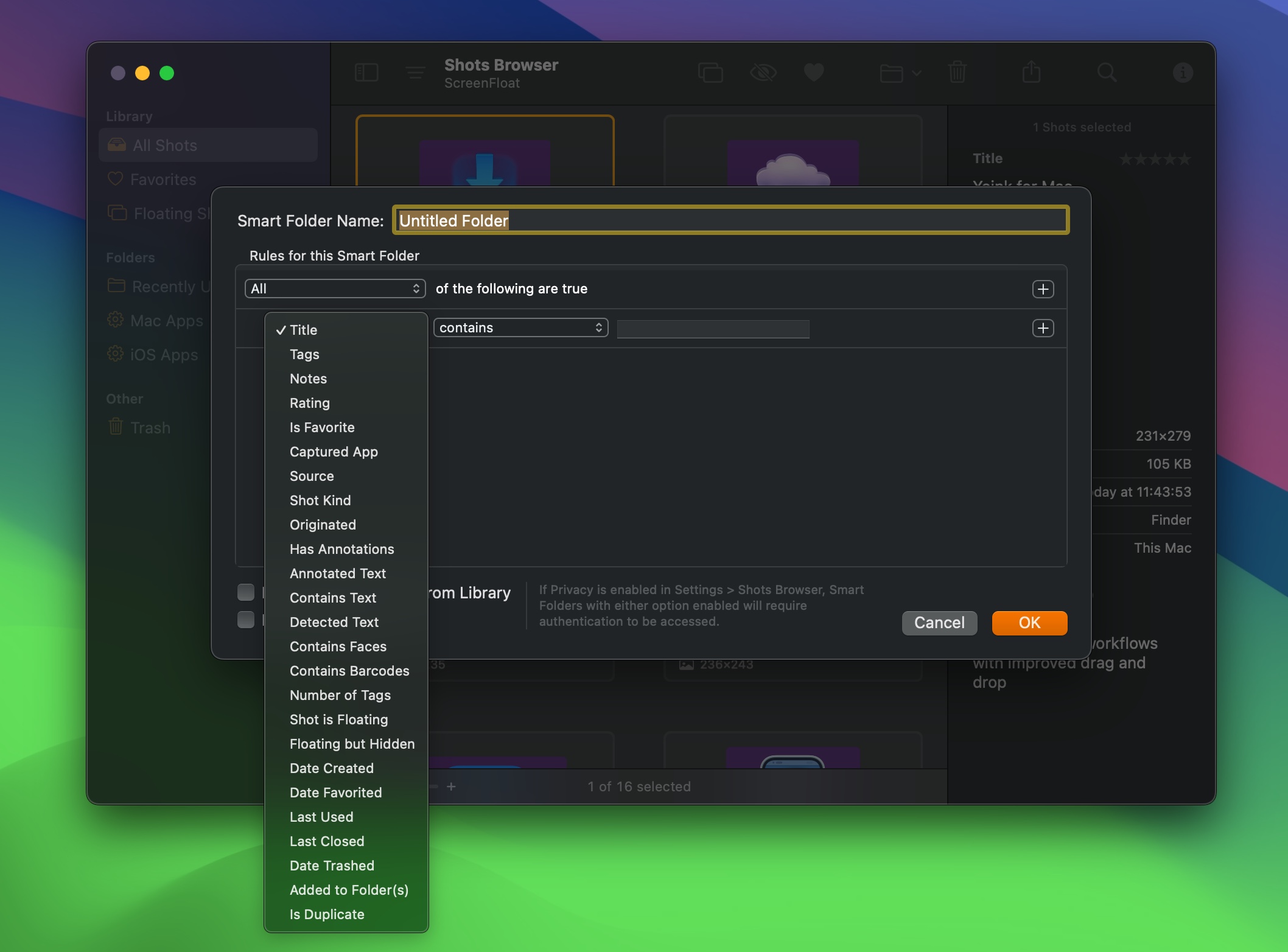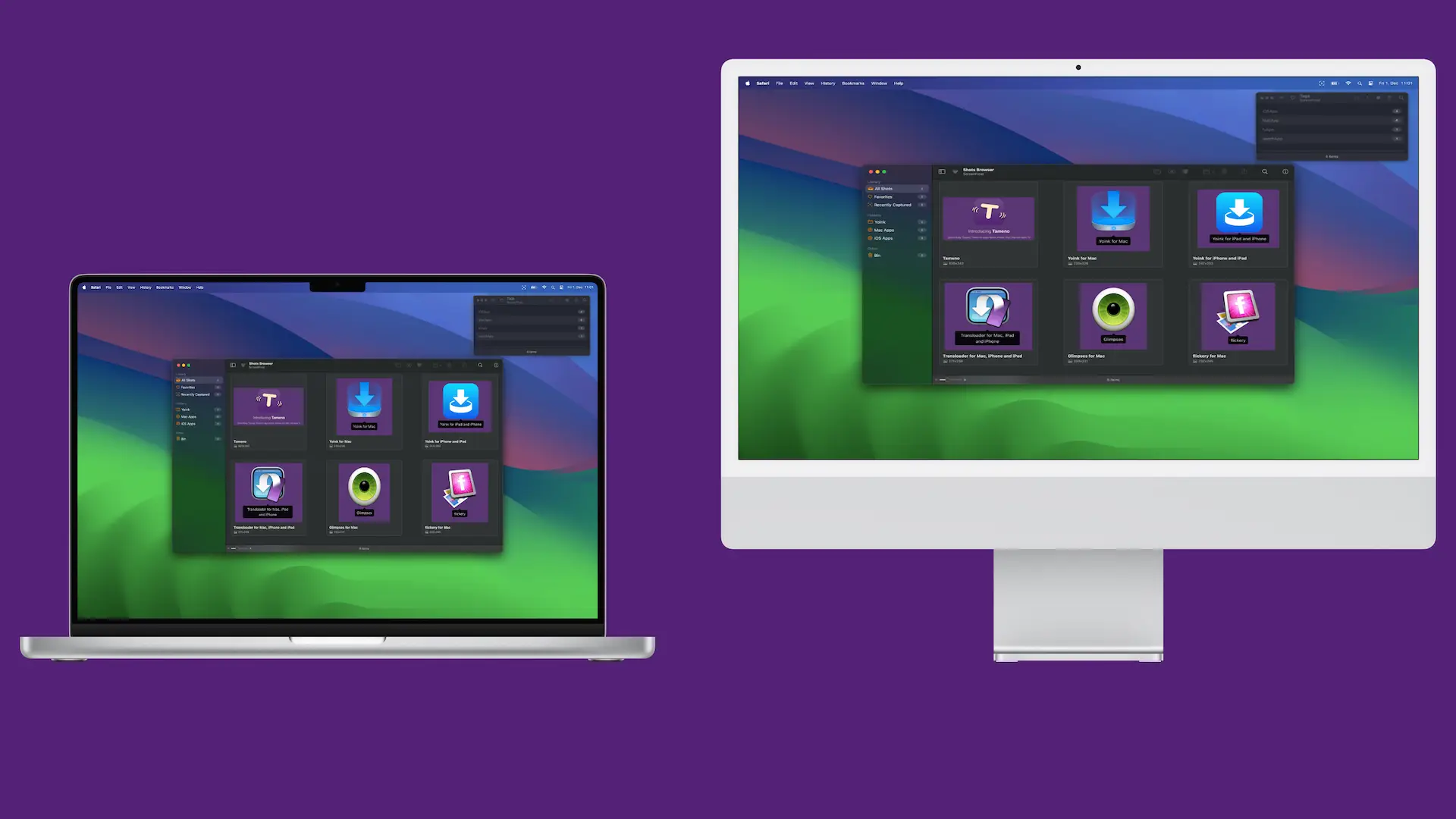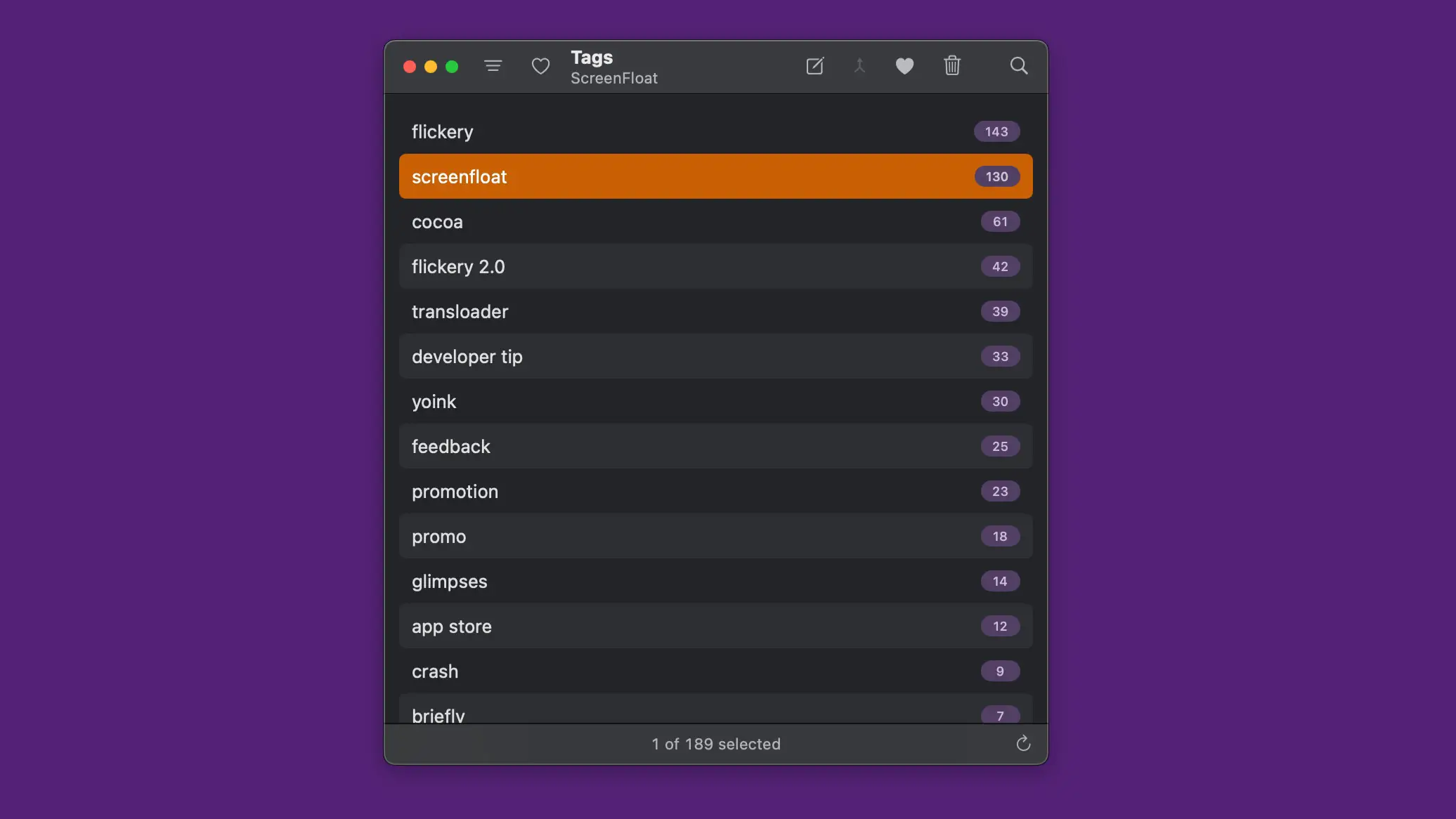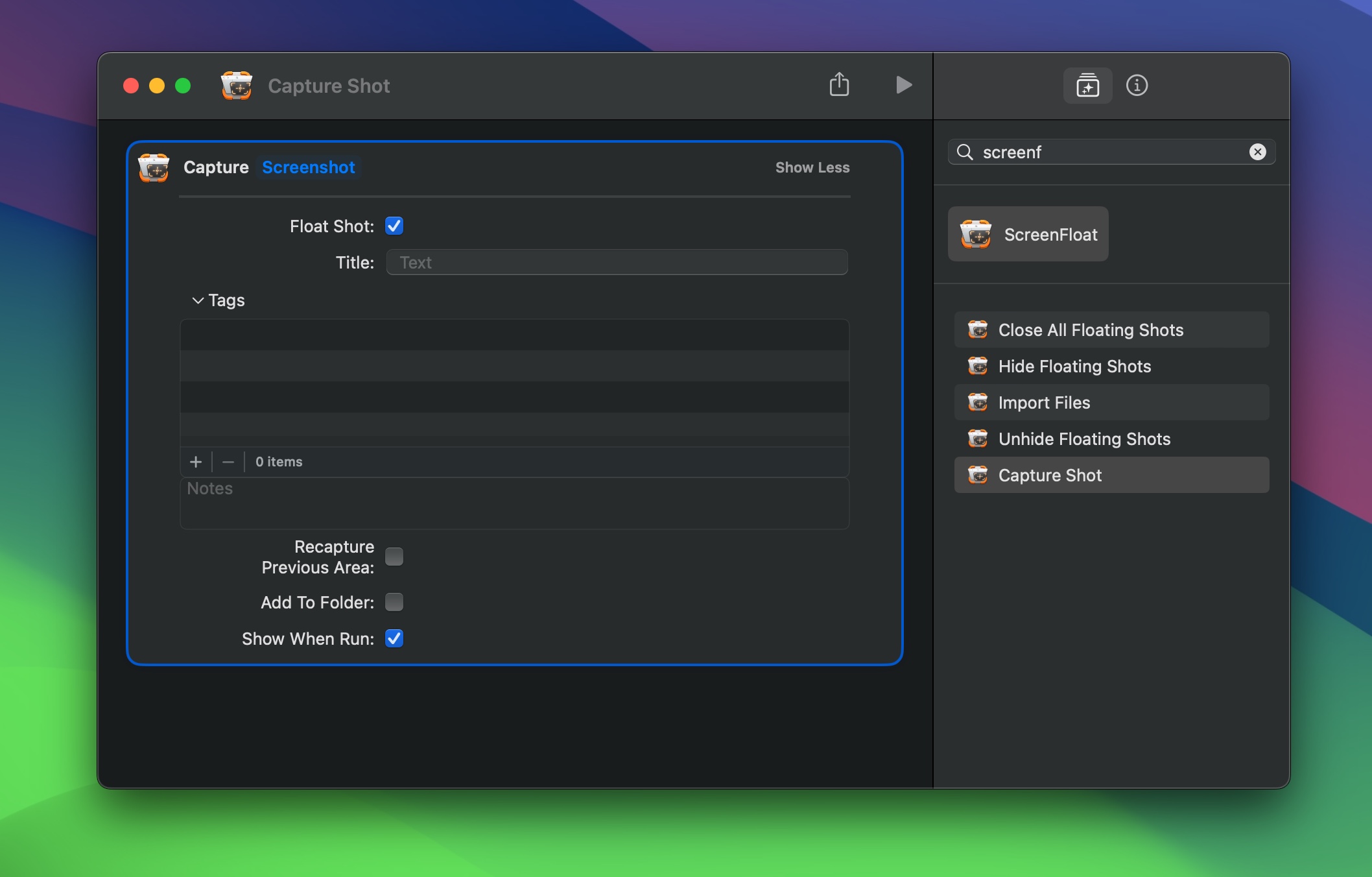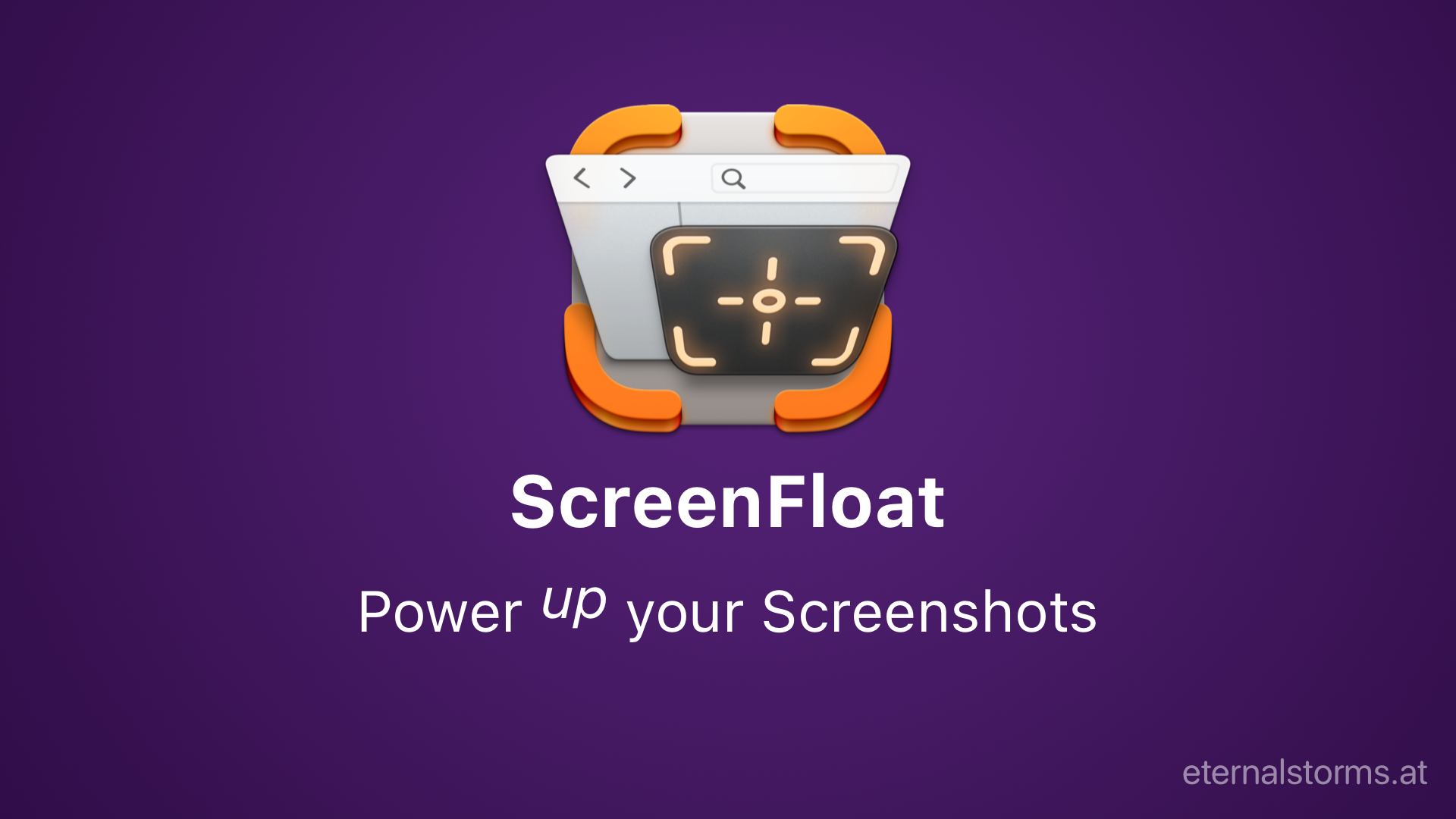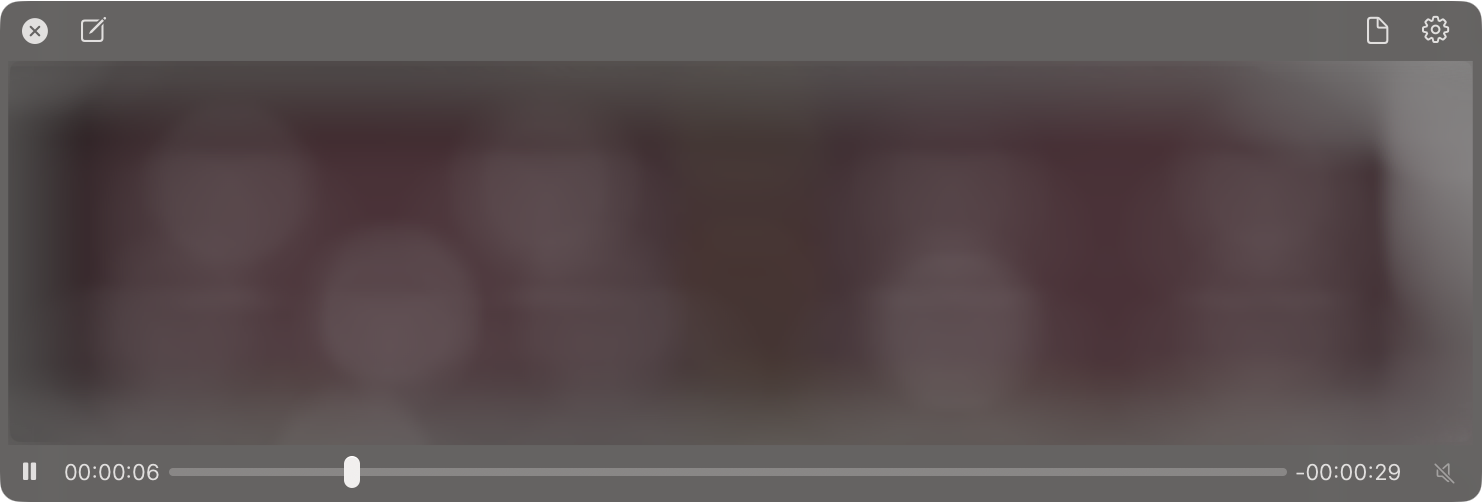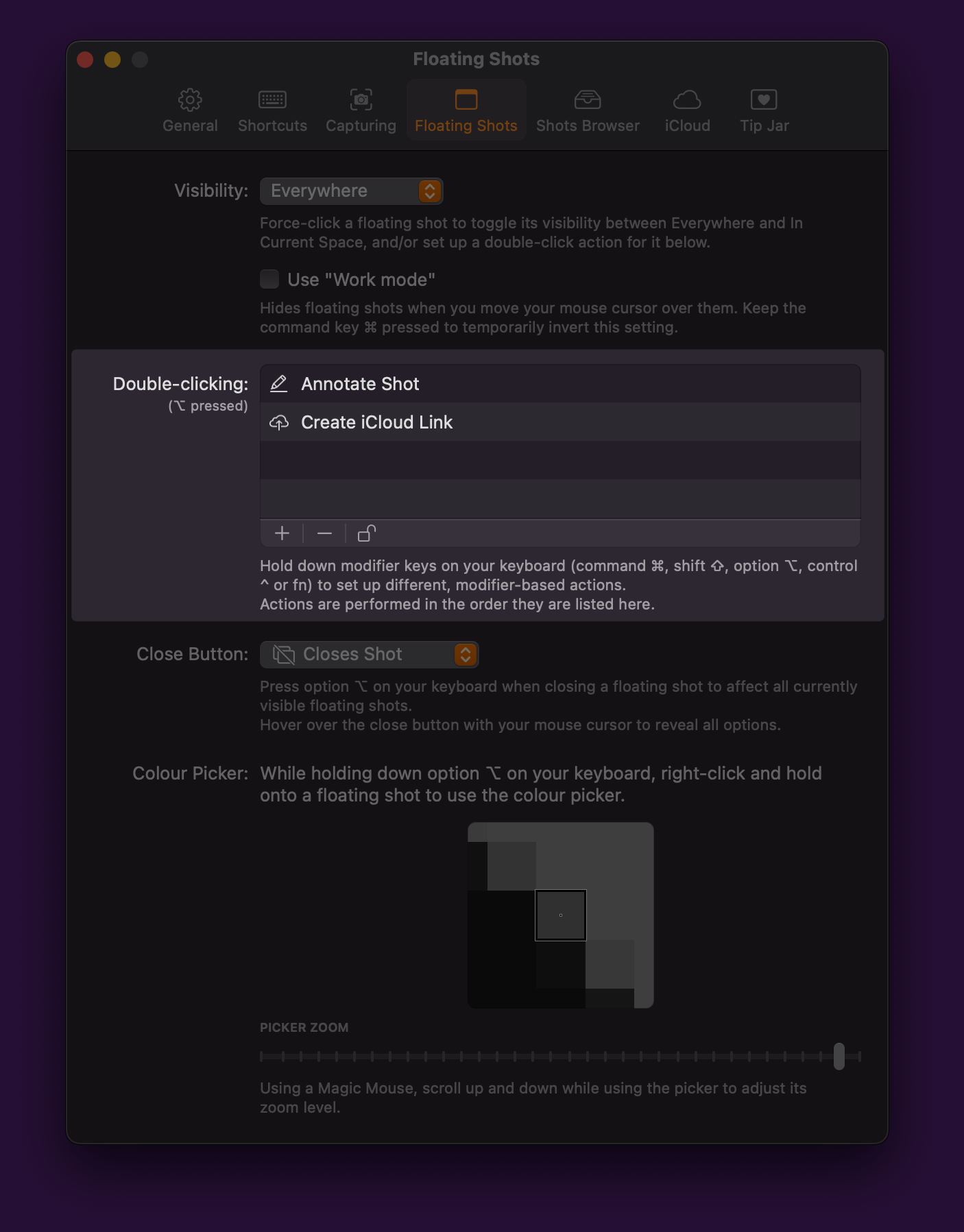Let’s take a tour through ScreenFloat and see how it can power up your screenshots, too.
ScreenFloat powers up your screenshots by allowing you to take screenshots and recordings that float above everything else, keeping certain information always in sight. Its Shots Browser stores your shots and helps you organize, name, tag, rate, favorite and find them. Everything syncs across your Macs.
Extract, view and copy detected text, faces and barcodes. Edit, annotate, markup and redact your shots effortlessly and non-destructively. Pick colors any time. And more.
Posts in this Series
Part II: Capture – Take Screenshots and Recording your Screen
At the heart of ScreenFloat are its screen capturing abilities. Read on to learn how to take screenshots, take screenshots with a timer, and record your screen.
Table of Contents
- Capture Screenshots and Recordings
- Screen Recording Options
- Timed Screenshots
- Re-Capture Previously Captured Areas
Capture Screenshots and Recordings
With ScreenFloat, you can capture screenshots (by default, ⌘ ⇧ 2), recordings (by default, ⌥ ⇧ 2), and timed screenshots (by default, ^ ⇧ 2).
While the keyboard shortcuts are very handy, you can also start captures from ScreenFloat’s menu bar icon:
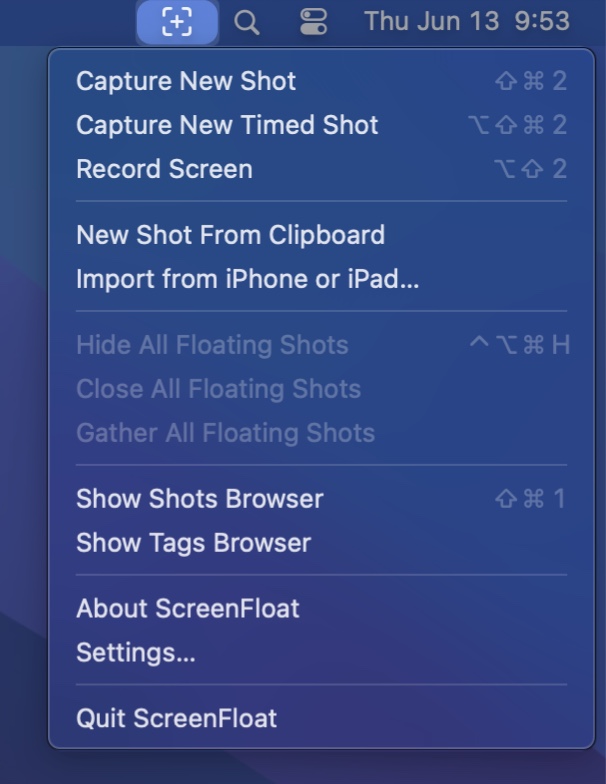
Speaking of the menu bar icon, you can also do this:
– option (⌥) – click onto ScreenFloat’s menu bar icon to take a screenshot
– option (⌥) – shift (⇧) – click onto ScreenFloat’s menu bar icon to start a screen recording
– option (⌥) – click onto ScreenFloat’s menu bar and then drag away to set up a timer for your screenshot between 3 and 15 seconds
All captures are selective, which means after you start a capture, you can select an area of your screen you’d like screenshot or record.
Any shot you take with ScreenFloat is stored in the Shots Browser for easy access.
Images and videos can be imported from other apps (like an image file in Finder, or an image from a webpage in Safari) – you can find out more about that in the Store section of this article series.
During the Capture
ScreenFloat uses macOS’ built-in screen capturing capabilities, which means you can make use of the following tricks while you select the area of your screen you’d like to capture:
By default, windows are captured without their shadows, a setting you can change in Settings > Capturing > Images > Remove shadows from captured windows.
Once you capture a shot by releasing the mouse button, the floating shot will appear.
Copy Text and Barcodes Right Away (OCR)
If you just want to quickly copy some non-copyable text or barcode content, here’s a neat trick:
Hold down control (^) and command (⌘) when releasing the mouse button, and any captured text will be copied to your clipboard right away.
If you want to copy the image data to your clipboard right away, hold down control (^) when releasing the mouse button.

Screen Recording Options
ScreenFloat offers a couple of options when you record a video of your screen:
+ Highlight your mouse cursor
+ Highlight mouse clicks
+ Highlight modifier and key strokes *
In addition to that, you can
+ Record audio input (using your default microphone)
+ Record system audio

To stop the recording, press the keyboard shortcut again, or select Stop Recording from ScreenFloat’s menu bar icon.
Audio can be removed from recordings at any time, all at once, or individually (only system- or microphone audio). You can trim, crop, resize and cut your recordings.
Screen recordings auto-trim away how you end the recording in ScreenFloat, which means that you pressing the keyboard shortcut to end the recording, or selecting “Stop Recording” from the menu bar icon, will not be part of the final video.
Easily extract still images from your video shots with a right-click.
Highlights Customization
Make your mouse cursor’s position more prominent, highlight mouse clicks (left, right, and other), and show an overlay for key strokes * – all customizable in ScreenFloat’s settings.
Change the mouse cursor highlight’s color and strength;
Change the highlight colors for left clicks, right clicks and other-button clicks, as well as the highlight’s strength;
Change the key stroke highlight’s text color, background color, its placement (top left, top center, top right, middle left, middle center, middle right, bottom left, bottom center, bottom right), whether to show caps lock and function key presses, or if every key press should be highlighted.
*Privacy note on key stroke highlights: Keyboard input monitoring begins and ends with video recordings and does not operate at any other time when ScreenFloat is running. Key strokes are neither stored, nor logged, and certainly not transmitted. Input monitoring is exclusively used to display key presses in your video recordings. You can grant and revoke input monitoring permissions any time in System Settings > Privacy & Security > Input Monitoring. Please refer to my privacy policy for further info.
Timed Screenshots
In addition to screenshots and screen recordings, you can also take timed screenshots, where the selected area will be captured after a countdown. Press ^ ⇧ 2 to start the countdown, and press it again to cancel it if you change your mind.
This can be handy when trying to capture a menu item in a submenu, or for anything else that needs further preparation and can’t be captured instantly with a normal screenshot.
The default interval is 5 seconds, but you can change it in Settings > Keyboard Shortcuts > Capture Shot With Timer > … .

As explained at the beginning of this article, you can also option (⌥)-drag from ScreenFloat’s menu bar item to select a range between 3 and 15 seconds.
Re-Capture Previously Captured Areas
Sometimes you’ll want to re-frame a shot slightly, or just capture an area again.
It’s easily done with ScreenFloat. Just press and hold any of the capture keyboard shortcuts, and you’ll be able to re-frame the previously selected area.
You can also select an aspect ratio when re-capturing by right-clicking:

And save areas you find yourself capturing repeatedly for quick access:

Lastly, you can re-use the frames of previously captured shots, by right-clicking onto them and selecting “Re-capture and Delete…”, which will bring up that shot’s area again for you to capture (and will only delete the original shot if you actually capture anew), or, if you hold down the option (⌥) key, you can select “Capture Shot Again…”, which will do the same, without the deletion part.
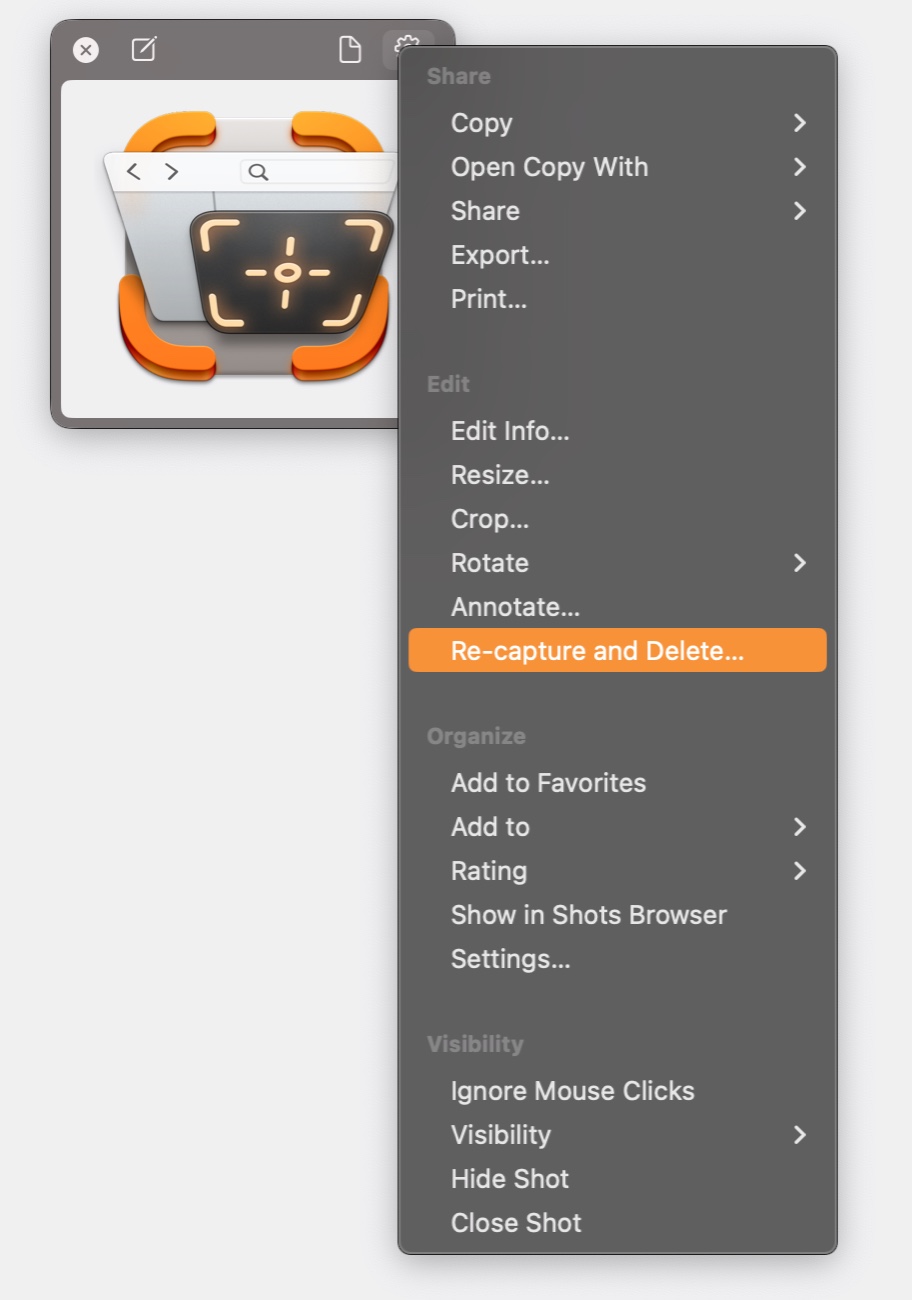

Up Next
The next part of this series – Part III: Float – Picture-in-Picture for your Screenshots and Recordings – takes a detailed look at all the advantages that floating shots have. Definitely take a look, there’s a lot of neat stuff there!
Links
ScreenFloat Website (+ free trial)
ScreenFloat on the Mac App Store (one-time purchase, free for existing customers)
ScreenFloat Usage Tips
Eternal Storms Software Productivity Apps Bundle (Yoink, ScreenFloat and Transloader at ~25% off)
Contact & Connect
Thank you for your time. I do hope you enjoy ScreenFloat!
